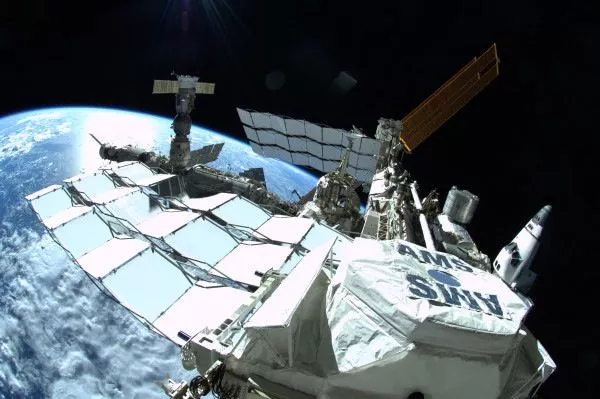Stars made of antimatter could exist in the Milky Way

Antimatter is exactly like regular matter but its charge is reversed, so the antimatter equivalent of positively charged protons are negatively charged antiprotons. In this case, AMS detected what looked like antihelium, which has a nucleus composed of two antiprotons and two antineutrons.
Cosmic rays can sometimes hit ordinary matter and produce simple antimatter particles, like antiprotons and positrons — the charge-reversed version of an electron. But no known process can create something complex like antihelium, Simon Dupourqué, a doctoral candidate in astrophysics at the University of Toulouse in France, told Live Science.
That got him and his colleagues wondering: Where exactly could this antihelium have come from? While physicists are reasonably certain that no large pockets of antimatter exist in the universe, some theorists have suggested that bits of the charge-reversed material could have collected into star-like objects, essentially forming antistars.
Antistars would fuse antihydrogen into antihelium to produce light, but they would otherwise look fairly ordinary. "If these objects existed, we could not distinguish them from a regular star," Dupourqué said.
But when antimatter and regular matter meet, they violently annihilate each other, leaving behind nothing but gamma rays. So ordinary matter floating through the cosmos in the form of gas and dust would hit these antistars, generating excess gamma radiation, Dupourqué said.
By combing through data from NASA's Fermi gamma-ray telescope, he and his co-authors uncovered 14 examples of small compact objects shining brightly in gamma rays that didn't show up in other star catalogs, meaning scientists don’t know what they are. That could make them potential antistar candidates. Their findings appeared April 20 in the journal Physical Review D.
The team isn't yet claiming that these are antistars, though. "They are much more likely to be something else," said Dupourqué, such as previously unknown gamma-ray emitters such as powerful pulsars or distant active galactic nuclei. If they were antistars, "it would change the way we think the universe formed," he added.
That's because cosmologists believe that shortly after the Big Bang nearly equal amounts of matter and antimatter were created. These twin materials crashed together into a spectacular spray of energy, leaving behind mainly matter, which was created in slightly higher proportions, according to an explainer from CERN.
Nobody knows how or why more matter was formed, creating what is known as the matter-antimatter asymmetry problem. If antistars existed, it might mean that some of that original antimatter somehow managed to survive for longer than scientists previously thought possible, Dupourqué said.
A great deal more work would have to be done, including follow-up observations with future telescopes, to confirm or rule out the antistar explanation, Vivian Poulin, an astrophysicist at the Montpellier Universe and Particles Laboratory in France who wasn't involved in the research, told Live Science.
Some of the antimatter in the early universe might have existed in large pockets that could have collapsed down into star-like objects, though this is not part of astronomers' standard picture of the moments after the Big Bang, he added.
Tags :
Previous Story
- Hubble telescope spots a pair of 'squabbling' galaxies...
- Why are the stars, planets and moons round,...
- Samsung's Galaxy Watch 4 could be a peek...
- Galaxy S20 Ultra review: Impressive but impractical
- Galaxy S20 Ultra: Top camera features finally seem...
- Galaxy S20 Ultra: Our 5 favorite camera features,...
- Galaxy Fold successor surfaces on samsung support pages;...
- Samsung offers amazing offers and deals on Galaxy...